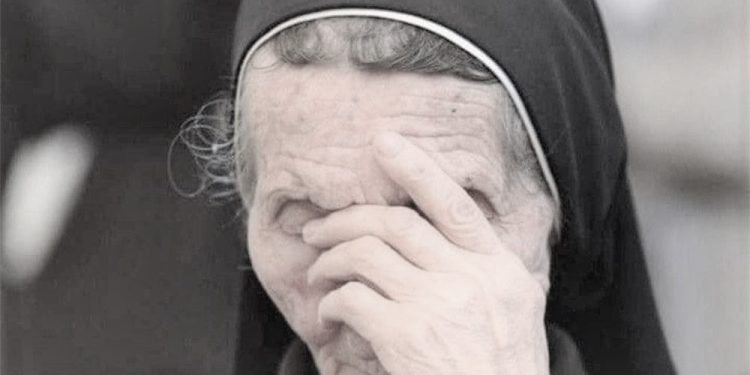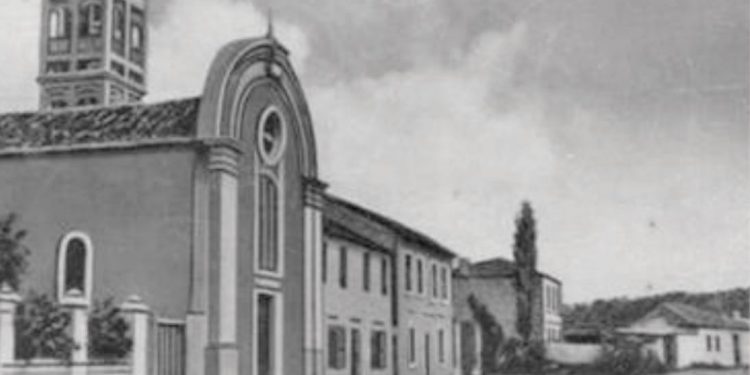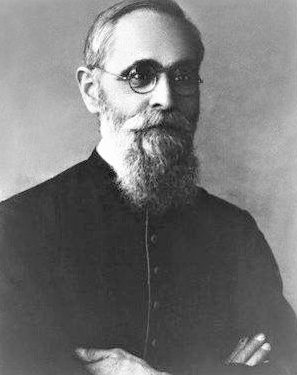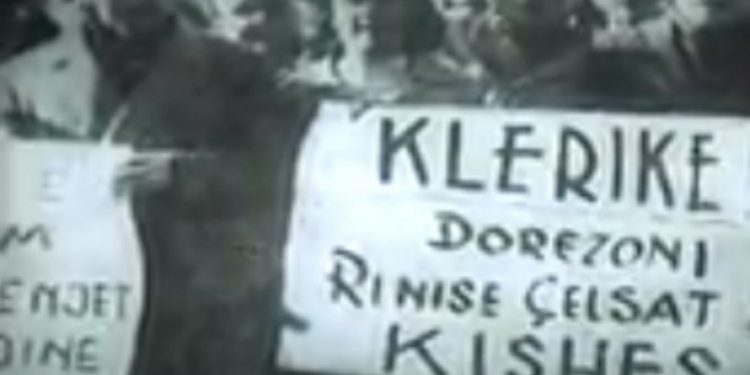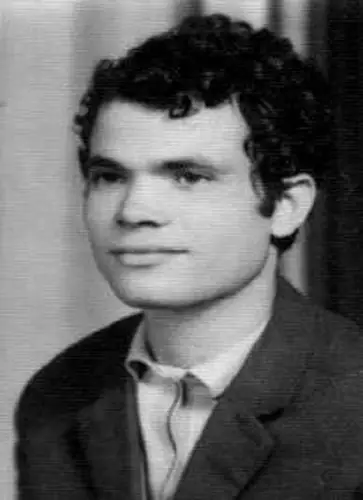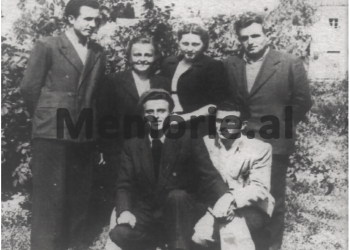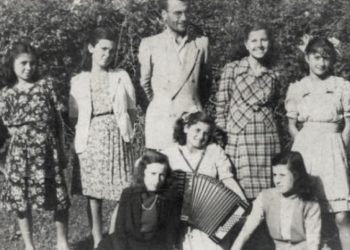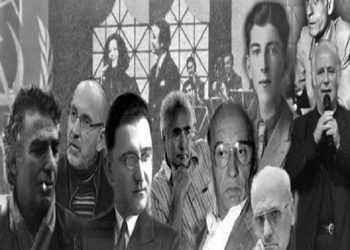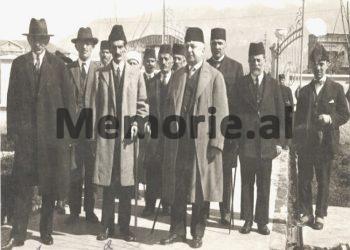By Vasil Qesari
Memorie.al/ The overthrow of the great totalitarian edifice in Albania would leave behind, not only the change of the system, accompanied by full hopes, mirages and cries of happiness but, unfortunately, also many wounds, dramas, victims, dust, ml lefe and disappointments from the most diverse. Ten years and more after that event, which deeply shook society, completely overturning many previous codes, rules and concepts, people still continue to ask themselves such questions as: What really happened in society Albanian, during the last 50 years of the dictatorship? How was it possible that the system managed to warp everything? Why did people accept it? What was the totalitarian logic of the transformation of society and the individual? How were the structures of totalitarian mechanisms conceived and functioning: propaganda, secret police and the exercise of the ideology of terror? How did it happen that among all the communist countries of Eastern Europe, Albania was considered an exception or a special case? Why did Enver Hoxha remain blindly, fanatically loyal to Stalin until the end, turning the country into a prison where violence, fear and purges continued until the end of the 80s? Why was the country so insanely isolated, locking people up between bunkers and barbed wire? Why, then, did all the above phenomena happen…?! The book “Post-scriptum for Dictatorship” does not claim to provide definitive answers to the above questions, or the complexity of the reasons that brought and maintained the totalitarian power in Albania. Nor is it a complete, deep and comprehensive fresco of the life and suffering that people experienced during that system. Its author, perhaps, has the merit that together with the retrospective view of the totalitarian period as well as the zeal of a passionate analyst, he has tried to turn his head back once again, to give not only his personal memories and opinions, but also to return once again to the vision of that era with the simple philosophy of preserving the Memory and supporting the Appeal to never forget the well-known maxim, that…the corpse’s nails and hair continue to grow even after death! Ten years or more after the great revolution, the book in question has current value and we hope it will be appreciated by the reader because, as an Albanian researcher also says… the greatest evil that can happen to a people comes when he fails to analyze his own past. An amnesic people are forced to be constantly neuropathic and repeat their painful experiences…!
THE HOUSE OF NUNS
…When we were high school students, every time we left school, we had to pass in front of the Catholic Church. In our city, where the majority of the inhabitants were Muslims and a few Orthodox Christians, the Catholic believers did not make more than 15-20 families, mainly with the orgy from Shkodra and other areas of the North. The church, an old building with a high bell tower, was located in the heart of the city, in ‘Varosh’, in an alley behind “Flag Square”. But, unlike the orthodox mosques and churches, where we teenagers from the “Ali Demi” high school went for every Easter or Eid, the doors of the Catholic Church were almost always closed. (Even to this day, I have before my eyes the images of the Easter Mass in the church of Saint-Todri. The old man in black and the elegant girls with candles in their hands, the psalms of Pope Lekos, the iconostasis carved in wood and the smoke of incense bishop Vissarion threw us in the face from time to time…) It was completely different, then, with the Catholic Church…!
Inside it, we had never had the chance to enter, which naturally made us even more curious. It was constantly closed. We passed in front of her, silent and with a strange feeling of mystery inside. Often, when I was alone, I stopped for a while and observed everything I saw in that gray building with fallen plaster in places. I don’t know why, but it gave me the impression of something mystical, which pushed me to explore it. My eyes were particularly drawn to its large wooden gate. Old and carved. Brown in color and out of ink…! A cross was carved into one of its jugs, on which something remained, from the former glimmer of the golden varak. The letters INRI still stood out in its four corners. Of course, I did not know their meaning. But still, I thought, they had to be the initials of something important to the cross symbolism of the church itself. Above, on the arcade of the facade, two or three meters above the gate, a relief was carved which represented Saint Mary with baby Jesus in her arms and, even higher, on the roof, another larger cross rose imposingly. A little further, the bell tower rose. This was, therefore, the exterior of the only Catholic Church in our city…!
…I repeat, every time I passed by, I felt engulfed by imaginary images! I don’t know why, but in front of me it was the size of a real cathedral. In our town, which had only ordinary buildings, that church with the few decorations on the facade, gave me the image of an architectural work. Almost like the ones I had seen in an album published before the liberation, which featured pictures from the Vatican and other works of the Italian Renaissance. The Catholic Church was located next to another two-story building. This second one had its windows protected by iron bars and, on their railings, there were never missing vases of flowers. Right there, the sisters, or as they were called the nuns, lived. Sisters…! An intriguing name, which not infrequently becomes the topic of our youth conversations. Several times, even, together with some friends, we had tried to stick our noses in, to see what was inside that mysterious gray house. It was the time of feverish readings and flights of age, so our minds fantasized all kinds of things.
How were they, the nuns…?!
Were they young, beautiful, with faces as white and smooth as ivory…? Those ghostly images often made us cross the narrow sidewalk in front of their windows, and strain our eyes to see beyond the thick curtains. To see even a faint detail. Something from the interior of the intimate rooms of their mysterious life. But in vain…! We were always disappointed. The curtains were never opened. They were always closed. It was impossible to break through them. The curtains placed over the windows and the dense and heavy curtains behind them made it impossible to discover that unknown world which for many of us, without knowing why, was very intriguing, attractive and full of magic.
We thought that there was really something that belonged to another world. A world which had nothing in common with the reality we experienced. And, above all, something that had to do with the mystery of their devotion and religious sacrifice. Under what circumstances had they made that decision? What about their spiritual world? (Those delicate and dreamy girls, with the imagined features of some of the characters of our literary readings). How did it happen that they had given their lives to God?! Those beings, which we considered divine and in our imaginations, always appeared kneeling and praying before the crucified Christ…! The temptation was really strong.
This pushed us to make some excessive fuss. Once, a classmate dared to ring the doorbell of their house, but none of us had the courage to stand and wait to see who would open it. All of us had run to our feet, not turning our heads back. I don’t know if it was a feeling of shyness, fear or guilt, mixed with the thought that we were making a serious mistake. Several times, we happened to see a lonely girl or woman crossing the threshold of that apartment. Couldn’t they have been nuns?… No, it was impossible! Because, unlike our fantasies, there was nothing mystical about them. At least, their appearance, faces, expressions did not show anything special. Nothing magical! However, we did not accept the disappointment; we insisted that the House of Nuns must have hidden something mysterious. And this happened for something else. In the city, nuns were almost never talked about. They almost didn’t exist.
(The only thing we had heard something about in passing happened while listening to some conversation where they were described as masters for the preparation of brides’ dowries. For embroideries, lace crochet, handwork and sewing machine as well as for embroidery and cooking lessons given to some girls from Catholic families). Of course, at that time we were very young and many phenomena we did not know and could not even understand. Religious knowledge was almost non-existent. Except for some fragments of sermons and stories heard from our grandmothers. Because the school was completely atheist. On the other hand, the education we received there, without a doubt, was in complete opposition to the culture and messages of religion. However, at that time, we could still go to churches and mosques. Of course, not as believers, but simply out of desire. But, well, not in the Catholic Church, which remained an enigma for us. Well, this, why?!
We had never asked ourselves that question. Why, she was constantly closed, silent? Why, as we had heard, was it opened so rarely that any of us knew about it? We would learn the reasons, truths and answers to those questions many years later. Among other things, they had to do with the tragic story of its only priest, father Jul Bonati. He was with the Italian orgy, but his whole family had been stuck in the country for many years and had obtained Albanian citizenship. Father Juli, having studied in Florence, knew many foreign languages well. (Thanks to that ability, he also translated Father Gjergj Fishta’s masterpiece, Lahuta e Malcia) into Italian.
Arrested a few years after the liberation, as a spy for the Italians, Father Bonati suffered terribly from inhuman tortures in prisons and, unable to cope with them, he suffered severe nervous depression, which led to complete mental and physical destruction. He ended up in a psychiatric hospital where he died in 1951. The same fate followed his successor, Father Mark Dushin, who served in the diocese of Durrës but also covered the Catholic faithful of Vlora. Father Marku came to this city only on certain days, to celebrate mass and to give a little life to the small Catholic community of Vlonia. But, in 1967, he too fell victim to the State Security!
He was arrested one Sunday, in the middle of mass, while he was preaching and, without much delay, he was sentenced to death. With the accusation that, as a Vatican spy, he tried to gather secret information about the Pasha-Limani military base. But this was only a pretext. The real reason for the punishment lay elsewhere. In the fact that while father Jul Bonati was eliminated, his successor had dared to come to Vlora and celebrate mass, exactly in one of the strongest bastions of the Party. The party authorities of Sigurimi, known for their ferocity against Catholicism and Christianity in general, could not stand without retaliating against that challenge. Precisely, that excessive courage led Father Mark Dush to the execution platoon, in May 1968. After that event, the Catholics of Vlora were left without a priest and, consequently, without religious ceremonies and celebrations.
The year…1967
During the winter of the end of that year, already a student coming to the city on vacation, I happened to pass by the Catholic Church again. It was a cold and windy evening. As was my habit and other times, (wandering with the curiosity of a teenager) I turned my head and looked longingly at the nuns’ house. In one of her rooms I saw a dim light. I don’t know why, but in those moments, deep in my soul I felt excitement mixed with a sense of liberation in me. Were they alive? – I said eagerly – They continued to live there, in their house…? Have they spared…? That year, both for the believers and for the objects of the cult, had been a real holocaust. Like all the mosques and churches of Vlora, the Catholic one also suffered that fate. Its facade was destroyed and transformed, and where the relief of Saint Mary with the little Jesus used to be, a large pit was opened. While the cross above the gate and the bell tower have disappeared and the building has turned into a puppet theater. (Puppet Theater? Yes, how did you think of turning that very church into a puppet theater? Was it an irony of fate or a significant fact? Perhaps, neither one nor the other, but simply the paradox of a regime that played theater with the people for decades, with an ideology which tried by all means to transform people into soulless dolls, into an army of marionettes and puppets)
After 1967, under the threats of the regime, the nuns of Vlora who belonged to the Servite Congregation were forcibly sent to their families. Only two of them stayed together, they lived in that old house in the Varosh neighborhood. Alone, but with great faith in God, they never humbled themselves, facing, for years, the provocations and traps of the Security. Thus, it was precisely in Vlora that, in complete secrecy and amid unimaginable sacrifices, the only assembly in Albania was able to survive. But, in the meantime, what was the final fate of the 200 nuns, scattered here and there, across Albania…? One of them was Sister Dava Kallmeti, otherwise known as Saint Veronika of Shkodra. She graduated in pedagogy in Bologna and served in the Assembly of Servite Sisters. After escaping the campaign of arrests in 1946, she devoted herself until death to the Catholic fathers who were in prisons and exiles, bringing them food and clothing.
Even Zhozefina Koliqi, known as Sister Lucie, has left an unforgettable name for the people of Shkodra. After the closing of the assembly, its secret activity, in addition to the pastoral one, has been intense in many of the Catholic families of the city, mainly to save, hide and fanatically preserve cult objects and religious books. Unfortunately, Sister Lucia died before she saw the happy day of salvation and the rebirth of the Church…!
Two other sisters, Liliana Radovani and Lorencina Leçi, were among the luckiest. They were able to survive and resume their religious activity, starting after the overthrow of the dictatorship. They belonged to the largest female congregation in Albania that of the Stigmata Sisters, an assembly which in 1945 numbered over 80 sisters (Albanian and Italian) and which was then brutally dispersed by the authorities. The names of the sisters, who went through that long ordeal experiencing humiliation, insults and contempt, just because they believed and loved God – are many and their stories are tragic and full of pain. Such were, for example, sisters Marie Kaleta , Ladje Pashka, Lucie Mëhilli and Marie Gjonmarkaj from Zadrima and many, many more…!
1991….Spring
The miracle had happened. As in all of Albania, in Vlora as well, many cult objects began to reopen one after the other. In the beginning, the Lead Mosque, (which, initially, had served as a warehouse and then as a painting department for the socialist emulation in the city); then Saint-Todri Church, where the Fire Department was installed) and, finally, the Catholic Church (former puppet theater). Those events turned into big and quite touching parties. Finally, people were free to believe in their God and celebrate the marked religious days, which the totalitarian regime had replaced with an endless list of other holidays such as, by the way, those of the founding of the partisan brigades , of the State Security, policemen, border guards, tankers, aviators, miners, pensioners, etc.
Exactly, on Christmas night of that lucky year, I was invited to film the first mass in the Catholic church. And, there, I had the chance to meet Don Giuseppe Colavero and Sister Licia Conti, two Italian missionaries who had arrived a few days ago from Otranto, to organize the official reopening of the church as well as the celebration of the Nativity) .
It was a mild December night. The square in front of the church was full of life. A made-up cross with two rows of electric lamps placed on its facade was the only sign that made you believe that there had once been a Christian cult object. Inside it, everything had remained as before: the stage of the puppet theater, first of all with the red curtains, the chairs and even some naked puppets hidden behind the scenes.
However, for the celebration of the mass, some changes have been made. An improvised olive wood cross was placed in the center of the stage. In front of him, there was a table covered with white cloth with three candles on it. While the hall was full and full and no longer lit up, most of the people stayed outside. Just before the midnight mass, Don Giuseppe invited us to spend a few moments right in the lodge next door, where the nuns lived. So, in the House of Nuns…! I was excited. Over 20 years had passed since the former years of early youth. Crossing the threshold of that small door with the timidity of a high school student, I was realizing an early dream. I was entering the mysterious lodge of nuns. I carefully observed the environments in which I passed. They were small rooms. Very simple. There was nothing left from the past. No cross, no icon, no sad face, as I had once imagined.
Nothing…! Nothing but the iron bars of the windows and the heavy curtains, which stood there, motionless and as always closed. One of the two nuns, with over 80 years of age on her back, was dying. She was lying on the bed, with an evangelical look on her face, there, in an annex lit by a dim candle. While the other, sister Lucia, a short woman, with a face as white as snow and eyes as blue as the sea, continued to be full of life and energy. Come tell me something! – Don Giuseppe said, pulling me to a wooden door, inserted deep into the wall of a room. Here, in this old board, the sisters were able to hide for twenty or so years, a cross and an offering (noodles) communion. Even in the most difficult and frightening days, they did not fail to pray to God, right in front of these precious objects, with unquenchable hope and faith in him.
Just before midnight, in the full church, on the improvised altar with the cross made of olive wood, the mass began.
Finally, the demon was defeated. Another new life was starting for the church…! Memorie.al




